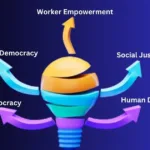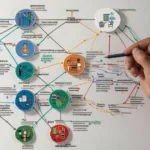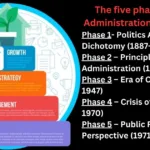“Unlock the secrets to effective leadership with ‘Levels Of Leadership: A Powerful Guide.’ This comprehensive blog post explores the journey from positional authority to pinnacle leadership, delving into the nuances of each stage and offering actionable insights for aspiring leaders. Discover how to cultivate trust, inspire performance, and foster growth at every level, empowering yourself and your team to reach new heights of success. Whether you’re a seasoned executive or a budding entrepreneur, this guide will equip you with the tools and strategies you need to thrive in today’s dynamic business environment. Dive into ‘Levels Of Leadership: A Powerful Guide’ and unleash your full potential as a leader.”
In the journey of leadership, one doesn’t simply become a great leader overnight. It’s a process, a progression through various levels that demands growth, adaptability, and continuous learning. Welcome to the exploration of the “Levels of Leadership,” where we delve into the different stages of leadership development and how each level shapes individuals into effective leaders.
Levels in Leadership Development
1. Self-Leadership: Focus on personal growth, self-awareness, and self-management.
2. Team Leadership: Ability to lead and manage a team effectively, fostering collaboration and synergy.
3. Organizational Leadership: Leading larger groups or departments within an organization, understanding organizational dynamics and strategic planning.
4. Strategic Leadership: Visionary leadership at the top levels of an organization, setting long-term goals and direction.
5. Global Leadership: Leading across cultural boundaries, understanding global trends, and adapting strategies accordingly.
6. Transformational Leadership: Inspiring and motivating others to achieve extraordinary outcomes, often through charisma and vision.
7. Ethical Leadership: Leading with integrity, making decisions based on ethical principles and values.
8. Adaptive Leadership: Ability to lead in complex and uncertain environments, embracing change and innovation.
9. Thought Leadership: Establishing oneself as an expert in a particular field, shaping industry trends and influencing others.
10. Servant Leadership: Putting the needs of others first, focusing on empowering and serving the team or organization.
These levels represent a comprehensive framework for leadership development, guiding individuals through various stages of growth and proficiency in leadership roles.
Understanding Leadership

The Essence of Leadership
Leadership isn’t just about holding a title or occupying a corner office; it’s about influence, inspiration, and impact. At its core, leadership is about guiding others towards a common goal, fostering growth, and bringing out the best in people.
Political Leadership Dynamics
Leadership in the realm of politics is a multifaceted and dynamic concept that plays a pivotal role in shaping the course of nations and societies. It involves not only holding positions of authority but also influencing public opinion, navigating complex social and economic dynamics, and steering the course of governance.
Articulating a Compelling Vision
At its core, political leadership entails the ability to articulate a compelling vision for the future, inspire confidence and trust among constituents, and mobilize support for policy initiatives and agendas. Political leaders must possess a deep understanding of the issues facing their constituents and the broader geopolitical landscape, as well as the skills to navigate the intricacies of governance and diplomacy.
Building Coalitions and Forging Alliances
One crucial aspect of political leadership is the ability to build coalitions and forge alliances across political divides. In a world characterized by competing interests and ideologies, effective political leaders must possess the skills to negotiate compromises, build consensus, and bridge ideological differences in order to advance their policy objectives.
Weathering Criticism and Adversity
Furthermore, political leadership often requires the ability to weather criticism, adversity, and public scrutiny. In the age of social media and 24-hour news cycles, political leaders are constantly under the microscope, subject to intense scrutiny and criticism from the media, opposition parties, and the public at large. As such, resilience, composure, and the ability to communicate effectively are essential qualities for political leaders to possess.
Balancing Competing Priorities
Moreover, political leadership involves a constant balancing act between competing priorities and interests. Leaders must navigate the delicate balance between upholding democratic principles and institutions while also advancing their policy agendas and political objectives. They must make difficult decisions in the face of competing demands and interests, often with far-reaching implications for their constituents and the broader society.
Conclusion: Navigating the Complexities
In conclusion, political leadership is a complex and challenging endeavor that requires a combination of vision, skill, and resilience. Effective political leaders possess the ability to inspire, unite, and mobilize support for their agendas while also navigating the complexities of governance and public opinion. By understanding the intricacies of political leadership, leaders can navigate the challenges of governance and steer their nations toward a brighter future.
Embracing the Complexity of Leadership
In essence, understanding leadership requires a holistic appreciation of its complexities and nuances. It involves recognizing the diverse ways in which leadership manifests, the essential qualities and skills it entails, and the ongoing journey of growth and self-discovery it represents. By embracing this understanding, individuals can embark on a path towards becoming more effective and impactful leaders in their respective spheres of influence.
According to John C. Maxwell there are 5 Levels of Leadership:
Level 1: Positional Leadership
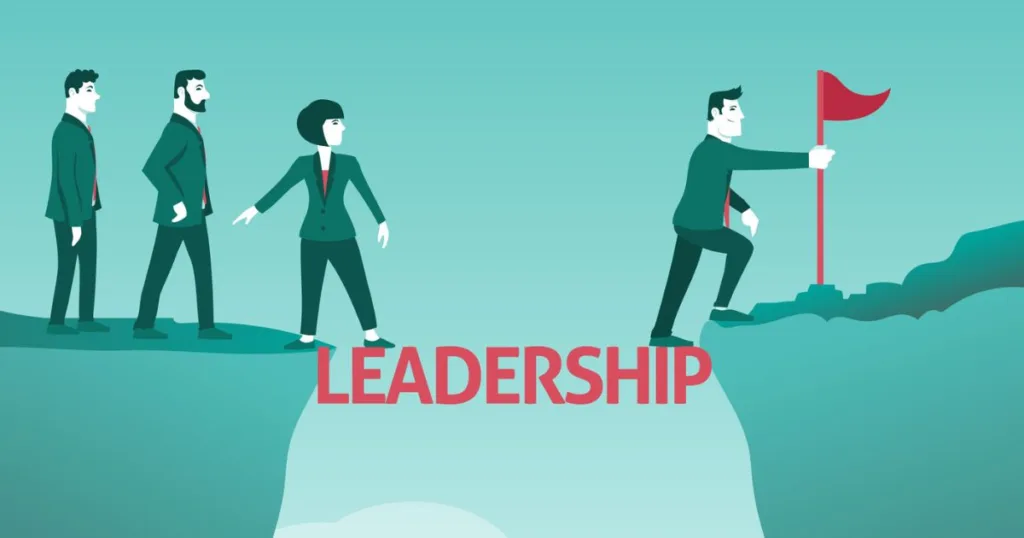
At the foundational level, leadership often begins with a title or a position of authority. Here, individuals lead based on their job description and the power vested in their role. However, true leadership goes beyond titles. It’s about earning respect, trust, and influence.
Positional leadership marks the beginning of one’s journey into leadership, often characterized by the authority granted through a title or position within an organization. While this level provides a platform for individuals to initiate their leadership roles, it’s crucial to recognize that true leadership goes beyond mere titles and positions.
Story 1: The New Manager
Imagine Sarah, a diligent employee who has recently been promoted to a managerial position in her company. Excited about her new role, Sarah steps into her office with a sense of pride and authority. However, as she quickly realizes, being a manager isn’t just about giving orders; it’s about earning the respect and trust of her team.
Sarah faces challenges in transitioning from a peer to a manager. Some team members are skeptical of her leadership abilities, while others resist her directives. Through trial and error, Sarah learns the importance of building relationships, communicating effectively, and leading by example. Over time, she earns the respect of her team through her dedication, empathy, and willingness to listen.
Story 2: The Executive Board Member
James, a seasoned professional, is appointed to the executive board of his organization. With this new title comes a heightened sense of responsibility and authority. However, James soon realizes that his effectiveness as a leader is not solely determined by his position on the board.
Despite his executive status, James finds that he must earn the trust and cooperation of his fellow board members through collaboration, consensus-building, and strategic decision-making. He learns that true leadership is about influencing others, inspiring confidence, and aligning collective efforts towards shared goals. By leveraging his expertise and fostering a culture of teamwork, James becomes a respected leader within the organization.
Story 3: The Team Supervisor
Mark, a dedicated employee, is promoted to the role of team supervisor in his department. Thrilled about his new position, Mark initially struggles to assert his authority and establish himself as a leader among his peers. His team members, accustomed to his previous role, are hesitant to accept his directives and guidance.
Determined to succeed, Mark embarks on a journey of self-discovery and growth. He attends leadership workshops, seeks mentorship from experienced supervisors, and solicits feedback from his team. Through patience, perseverance, and a genuine commitment to his team’s success, Mark gradually earns the respect and admiration of his colleagues. His transformation from a positional leader to an inspiring mentor serves as a testament to the power of leadership beyond titles.
In these stories, we witness the challenges and triumphs of individuals navigating the realm of positional leadership. While titles and positions may grant authority, true leadership is forged through relationships, integrity, and a commitment to serving others. As these stories illustrate, positional leadership is just the beginning of a journey towards becoming an impactful and influential leader.
Level 2: Permission Leadership

Moving beyond positional authority, permission leadership focuses on building relationships. Leaders at this level understand the importance of trust and connection. They seek permission from their team to lead, earning respect not just because of their title, but because of their character and rapport.
Permission leadership represents a pivotal stage in the journey of leadership development, characterized by the recognition that true influence comes not from authority alone but from the trust and permission granted by others. Leaders at this level focus on building relationships, fostering trust, and earning the consent of their team members to lead.
Story 1: The Supportive Supervisor
Emily, a supervisor at a customer service company, adopts a permission leadership approach to guide her team. Instead of relying solely on her positional authority, Emily takes the time to build meaningful connections with her team members. She listens attentively to their concerns, values their input, and supports them in their professional development.
Through her approachable demeanor and genuine interest in their well-being, Emily earns the trust and respect of her team. They feel empowered to voice their opinions, share ideas, and collaborate towards common goals. As a result, productivity and morale soar, and Emily’s team becomes known for its cohesion and effectiveness.
Story 2: The Collaborative Manager
John, a manager in a technology company, understands the importance of collaboration in leadership. Rather than dictating orders from the top down, John embraces a permission leadership style that encourages participation and ownership among his team members.
John fosters an environment where everyone’s ideas are valued, and decisions are made collectively. He empowers his team to take initiative, experiment with new approaches, and learn from both successes and failures. By giving his team permission to lead in their respective roles, John cultivates a culture of innovation and continuous improvement.
Story 3: The Empathetic Leader
Samantha, a team leader in a healthcare organization, embodies empathy in her leadership approach. She recognizes that each team member has unique strengths, challenges, and aspirations. Rather than imposing her own agenda, Samantha takes the time to understand her team members’ individual needs and preferences.
Through active listening, empathy, and genuine care, Samantha builds strong connections with her team. She creates a safe and supportive environment where team members feel comfortable expressing themselves and taking risks. By granting permission for authenticity and vulnerability, Samantha inspires loyalty, commitment, and high performance among her team.
Story 4: The Inclusive Director
Michael, a director at a nonprofit organization, champions inclusivity and diversity in his leadership style. He understands that true leadership involves valuing and embracing the perspectives and experiences of all team members, regardless of background or identity.
Michael actively seeks out input from individuals with diverse viewpoints, ensuring that decision-making processes are inclusive and equitable. He creates opportunities for underrepresented voices to be heard and empowered within the organization. By fostering an inclusive culture where everyone feels valued and respected, Michael drives innovation, creativity, and organizational success.
Story 5: The Servant Leader
David, a CEO of a hospitality company, exemplifies servant leadership in his approach to leading. He believes that leadership is not about wielding power or authority but about serving the needs of others and fostering their growth and development.
David leads by example, rolling up his sleeves and working alongside his team members to tackle challenges and achieve goals. He prioritizes their well-being, recognizing that their success is intertwined with the success of the organization. By serving as a mentor, coach, and advocate for his team, David earns their trust, loyalty, and commitment to the company’s mission.
In these stories, we witness the transformative power of permission leadership in fostering trust, collaboration, and empowerment within teams and organizations. By prioritizing relationships, empathy, and inclusivity, leaders at this level create environments where individuals feel valued, respected, and inspired to contribute their best work.
Level 3: Production Leadership

In this level, leaders shift their focus to results. They lead by example, demonstrating competence, efficiency, and productivity. It’s about getting things done and achieving tangible outcomes. Production leaders inspire through action, setting high standards and driving performance.
Production leadership marks a significant shift from relying solely on positional authority or building relationships to focusing on achieving tangible results and driving performance. Leaders at this level lead by example, demonstrating competence, efficiency, and a relentless commitment to delivering outcomes.
Story 1: The Results-Driven Manager
Alex, a project manager in a construction company, embodies production leadership in his approach to leading his team. Recognizing the importance of delivering projects on time and within budget, Alex sets clear goals, establishes timelines, and holds his team members accountable for their performance.
Through his proactive management style and attention to detail, Alex ensures that projects progress smoothly and efficiently. He motivates his team by highlighting their successes, providing constructive feedback, and addressing any obstacles or challenges that arise. As a result, Alex’s team consistently exceeds expectations, earning accolades from clients and stakeholders alike.
Story 2: The High-Performance Team Lead
Maria, a team lead in a software development company, is known for her ability to drive performance and achieve results. With a keen focus on quality and efficiency, Maria empowers her team to strive for excellence in their work.
Maria sets ambitious but achievable goals for her team, providing them with the resources and support they need to succeed. She fosters a culture of accountability, where each team member takes ownership of their tasks and collaborates seamlessly with others. Through her leadership, Maria’s team consistently delivers high-quality software products that meet or exceed customer expectations.
Story 3: The Sales Director
Jake, a sales director in a marketing agency, embodies production leadership in his role. With a relentless focus on driving revenue and achieving targets, Jake leads by example, consistently exceeding his own sales quotas and setting the bar high for his team.
Through his proactive approach to prospecting, relationship-building, and closing deals, Jake inspires his team to push beyond their comfort zones and strive for excellence. He provides ongoing training and support, equipping his team with the tools and knowledge they need to succeed in a competitive market. Under Jake’s leadership, the sales team consistently surpasses revenue targets, positioning the company for growth and success.
Story 4: The Operations Manager
Sarah, an operations manager in a manufacturing company, is known for her ability to optimize processes and maximize efficiency. With a keen eye for detail and a focus on continuous improvement, Sarah identifies opportunities to streamline operations and eliminate waste.
Sarah implements lean principles and best practices to enhance productivity and reduce costs throughout the organization. She empowers her team to take ownership of their roles and contribute ideas for process improvement. Through Sarah’s leadership, the company achieves significant gains in productivity, profitability, and customer satisfaction.
Story 5: The Entrepreneurial CEO
Matt, the CEO of a startup company, embodies production leadership in his entrepreneurial journey. With limited resources and a high-stakes environment, Matt is tasked with driving growth and scaling the business rapidly.
Through his strategic vision, decisive action, and relentless determination, Matt navigates the challenges of entrepreneurship with confidence and resilience. He leads by example, working tirelessly alongside his team to overcome obstacles and capitalize on opportunities. Under Matt’s leadership, the startup achieves remarkable success, disrupting the market and achieving exponential growth.
In these stories, we witness the transformative impact of production leadership in driving results, fostering performance, and achieving success. By setting clear goals, leading by example, and empowering their teams, leaders at this level inspire excellence and drive organizational success.
Level 4: People Development Leadership

People development leaders understand that their success hinges on the growth and empowerment of their team. They invest time and resources into developing others, nurturing talent, and cultivating future leaders. Their focus is on building a strong, capable team that can thrive independently.
People development leadership represents a significant evolution in the leadership journey, where leaders shift their focus from driving results to investing in the growth and empowerment of their team members. Leaders at this level understand that the success of the organization hinges on the development and well-being of its people.
Story 1: The Mentorship Advocate
Sarah, a senior manager in a technology firm, embodies people development leadership through her commitment to mentorship and coaching. Recognizing the importance of nurturing talent and fostering growth, Sarah takes aspiring leaders under her wing, providing guidance, support, and valuable insights gleaned from her own experiences.
Through regular one-on-one sessions, Sarah helps her mentees identify their strengths, weaknesses, and areas for development. She challenges them to set ambitious goals, pursue continuous learning, and step outside their comfort zones. Under Sarah’s mentorship, countless individuals have flourished in their careers, ascending to leadership roles and making significant contributions to the organization.
Story 2: The Talent Developer
Michael, a human resources director in a multinational corporation, prioritizes people development in his leadership approach. With a keen eye for talent and potential, Michael identifies high-potential individuals within the organization and designs tailored development plans to help them reach their full potential.
Michael invests in training programs, leadership workshops, and coaching sessions to equip employees with the skills and knowledge they need to succeed. He provides constructive feedback, celebrates successes, and offers opportunities for growth and advancement. Through Michael’s efforts, the organization cultivates a pipeline of future leaders who are prepared to tackle the challenges of tomorrow.
Story 3: The Empowerment Advocate
Jessica, a team leader in a marketing agency, embodies people development leadership through her focus on empowerment and autonomy. Recognizing that micromanagement stifles creativity and innovation, Jessica empowers her team members to take ownership of their projects and make decisions autonomously.
Jessica fosters a culture of trust and accountability, where team members feel empowered to experiment, take risks, and learn from their mistakes. She provides guidance and support when needed but encourages her team to embrace challenges and find their own solutions. Through Jessica’s leadership, team members feel valued, respected, and motivated to unleash their full potential.
Story 4: The Diversity and Inclusion Champion
David, a senior executive in a financial institution, is committed to fostering diversity and inclusion in the workplace. Recognizing the importance of diverse perspectives and experiences, David champions initiatives to promote diversity, equity, and inclusion within the organization.
David spearheads recruitment efforts to attract talent from diverse backgrounds and ensures that hiring practices are fair and inclusive. He advocates for policies and programs that support work-life balance, diversity training, and career development opportunities for underrepresented groups. Through David’s leadership, the organization becomes a more inclusive and equitable place to work, where every employee feels valued, respected, and empowered to succeed.
Story 5: The Continuous Learning Advocate
Emily, a department head in a research institution, is passionate about fostering a culture of continuous learning and development. Recognizing that knowledge is power, Emily invests in training and educational opportunities to help her team members stay ahead of the curve in their respective fields.
Emily encourages her team to pursue certifications, attend conferences, and participate in workshops to expand their skill sets and stay abreast of industry trends. She allocates time and resources for professional development, recognizing that investing in her team’s growth ultimately benefits the organization as a whole. Through Emily’s leadership, the organization remains at the forefront of innovation and discovery, driven by a team of lifelong learners.
In these stories, we witness the transformative impact of people development leadership in unlocking the potential of individuals and driving organizational success. By prioritizing mentorship, talent development, empowerment, diversity, and continuous learning, leaders at this level create environments where employees thrive, grow, and achieve their fullest potential.
Level 5: Pinnacle Leadership
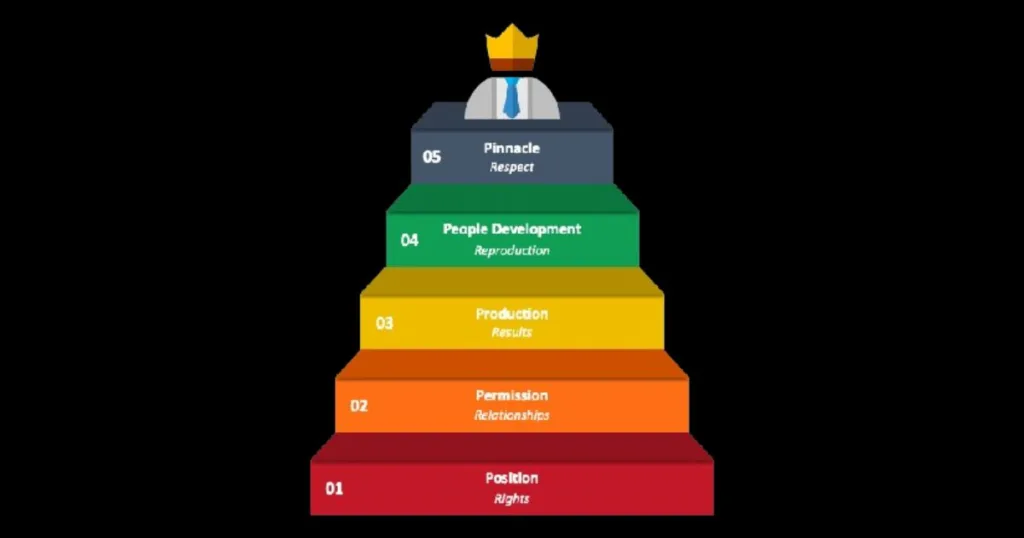
Pinnacle leaders are rare and revered. They not only achieve exceptional results but also leave a lasting legacy. These leaders transcend personal success and focus on the greater good. They inspire on a global scale, driving change, and making a profound impact that extends far beyond their immediate sphere of influence.
Pinnacle leadership represents the apex of the leadership journey, where individuals transcend personal success and focus on creating a lasting legacy that extends far beyond their immediate sphere of influence. Leaders at this level inspire on a global scale, driving change, and making a profound impact on society.
Story 1: The Social Impact Entrepreneur
Hannah, a social impact entrepreneur, epitomizes pinnacle leadership through her dedication to creating positive change in the world. Recognizing the power of business as a force for good, Hannah founds a company that addresses pressing social and environmental issues.
Through her innovative business model and unwavering commitment to social responsibility, Hannah empowers marginalized communities, preserves natural resources, and promotes sustainable development. Her company becomes a beacon of hope, inspiring other businesses to prioritize purpose over profit and make a meaningful difference in the world.
Story 2: The Global Humanitarian
James, a global humanitarian, embodies pinnacle leadership through his tireless efforts to alleviate suffering and promote human rights around the world. With a deep sense of compassion and empathy, James travels to conflict zones, disaster areas, and underserved communities, providing aid and support to those in need.
Through his advocacy work, fundraising efforts, and grassroots initiatives, James shines a spotlight on overlooked humanitarian crises and mobilizes resources to address them. His unwavering commitment to social justice and equality inspires individuals and organizations to join the fight for a more just and equitable world.
Story 3: The Inspirational Thought Leader
Emma, an inspirational thought leader, exemplifies pinnacle leadership through her ability to inspire and empower others through her words and actions. Through her books, speeches, and online platforms, Emma shares insights, wisdom, and practical strategies for personal growth and fulfillment.
Emma’s message resonates with people from all walks of life, inspiring them to overcome adversity, pursue their passions, and live with purpose and authenticity. Through her unwavering commitment to empowering others to reach their full potential, Emma ignites a global movement of positive change and transformation.
Story 4: The Visionary Innovator
John, a visionary innovator, embodies pinnacle leadership through his groundbreaking contributions to science, technology, and society. With a bold vision and relentless determination, John pioneers new technologies, revolutionizes industries, and pushes the boundaries of what is possible.
Through his groundbreaking inventions and transformative ideas, John transforms the way we live, work, and interact with the world around us. His legacy inspires future generations of innovators to dream big, take risks, and push the boundaries of human knowledge and achievement.
Story 5: The Servant Leader
Sarah, a servant leader, exemplifies pinnacle leadership through her selfless dedication to serving others and making a positive impact in her community. With humility and compassion, Sarah devotes her time, energy, and resources to addressing the needs of the most vulnerable members of society.
Through her volunteer work, philanthropic initiatives, and advocacy efforts, Sarah brings hope and healing to those facing adversity and hardship. Her commitment to serving others inspires individuals and organizations to join her in the pursuit of a more compassionate and just world.
In these stories, we witness the transformative power of pinnacle leadership in driving positive change, inspiring others, and leaving a lasting legacy that transcends time and space. By embodying values of compassion, vision, innovation, and service, leaders at this level create a brighter future for generations to come.
Embracing Personal Growth
Regardless of the level of leadership one occupies, personal growth is essential. It’s about continually evolving, learning from experiences, and honing skills. Great leaders are committed to their own development as much as they are to the development of others.
Cultivating Emotional Intelligence
Emotional intelligence is a cornerstone of effective leadership. It’s about understanding oneself and others, managing emotions, and navigating complex interpersonal dynamics. Leaders who possess high emotional intelligence can inspire trust, resolve conflicts, and foster a positive work environment.
Importance of Mentorship
Mentorship plays a pivotal role in leadership development. Having a mentor provides guidance, support, and valuable insights gleaned from experience. Mentors can offer perspective, challenge assumptions, and help navigate the ups and downs of leadership.
Balancing Confidence and Humility
Successful leaders strike a delicate balance between confidence and humility. While confidence instills trust and inspires others, humility allows leaders to remain open-minded, empathetic, and approachable. It’s about projecting strength without arrogance and being willing to admit mistakes and learn from them.
Handling Setbacks and Criticism
Setbacks and criticism are inevitable in leadership. How leaders respond to these challenges determines their resilience and growth. Instead of dwelling on failures, effective leaders view setbacks as opportunities for learning and improvement. They seek feedback, adapt to change, and emerge stronger from adversity.
Fostering a Culture of Trust
Trust is the bedrock of effective leadership and high-performing teams. Leaders must prioritize transparency, integrity, and accountability to foster trust within their organizations. By creating a culture of trust, leaders empower their teams to collaborate, innovate, and achieve collective success.
Inspiring Through Vision
Visionary leadership ignites passion and drives progress. Leaders who articulate a compelling vision inspire others to rally behind a common purpose. They communicate clearly, paint a vivid picture of the future, and motivate their teams to pursue ambitious goals with enthusiasm and determination.
The Role of Self-Awareness
Self-awareness is key to leadership effectiveness. Leaders who understand their strengths, weaknesses, and blind spots can leverage their talents effectively and mitigate potential pitfalls. By continuously reflecting on their actions and seeking feedback, leaders cultivate self-awareness and refine their leadership approach.
Conclusion
In conclusion, leadership is a journey of growth and transformation. By understanding and navigating the various levels of leadership, individuals can develop the skills, mindset, and character traits necessary to lead with authenticity, impact, and influence. Whether you’re just starting your leadership journey or aiming for the pinnacle, remember that leadership is not just about the destination but the journey itself.
FAQs
What are the different levels of leadership?
The different levels of leadership include positional leadership, permission leadership, production leadership, people development leadership, and pinnacle leadership.
How can I become a better leader?
To become a better leader, focus on personal growth, cultivate emotional intelligence, seek mentorship, balance confidence and humility, handle setbacks and criticism gracefully, foster a culture of trust, inspire through vision, and cultivate self-awareness.
Why is emotional intelligence important in leadership?
Emotional intelligence is important in leadership because it enables leaders to understand and manage their emotions effectively, navigate interpersonal relationships, inspire trust, resolve conflicts, and foster a positive work environment.
What role does mentorship play in leadership development?
Mentorship plays a crucial role in leadership development by providing guidance, support, and valuable insights gleaned from experience. Mentors offer perspective, challenge assumptions, and help navigate the complexities of leadership.
How can leaders foster a culture of trust within their organizations?
Leaders can foster a culture of trust within their organizations by prioritizing transparency, integrity, and accountability. By leading by example, communicating openly, and demonstrating consistency, leaders can create an environment where trust thrives.
People Also Read: Leadership: A Dynamic Exploration into Its Essence and Impact!






